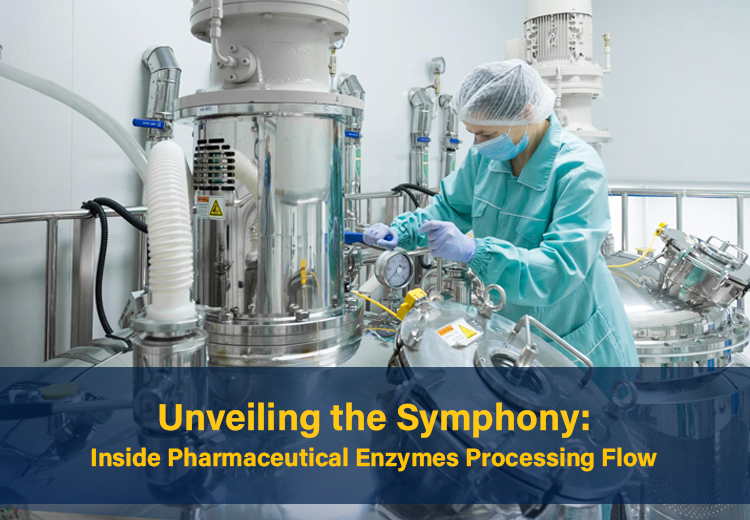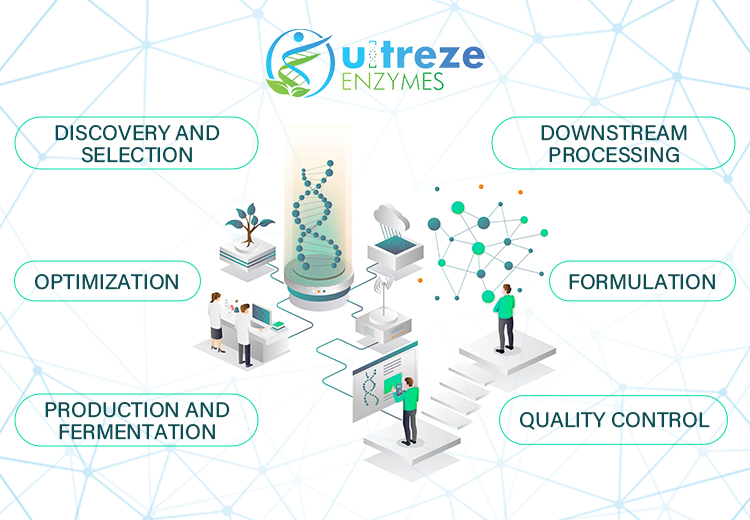
Pharmaceutical enzymes work like medicine helpers, speeding up important reactions for positive effects. Think of it as a well-organized symphony, blending precision, science, and technology. Now, let’s explore the stages, methods, and importance of processing these enzymes for making medicines that impact our well-being.
Understanding Pharmaceutical Enzymes
Enzymes in living things are like nature’s catalysts, making chemical reactions happen faster. In pharmaceuticals, we use them because they’re really good at improving drug synthesis, increasing how well the drug works, and making production smoother. These helpers are crucial in creating medicines because they’re super specific in what they do.
That’s the simple way to look at how these enzymes work in the world of medicine!
Biopharmaceutical manufacturing is like making important medicines from living things. It goes through different steps, such as growing cells, fermentation, cleaning, and creating the final medicine. All of these steps are carefully controlled to make sure the medicine is good, safe, and works well. This process is crucial in the pharmaceutical industry because it helps create new and specific treatments for different health problems, like long-term illnesses or rare disorders.
Let’s take a dive to understand the Enzyme Processing Flow.

Processing Stages
1) Discovery and Selection:
First, scientists pick the best suitable for the desired pharmaceutical application. It’s like choosing ingredients for a recipe. They look at how good the enzymes are at their jobs. This involves comprehensive screening processes to assess enzyme properties such as substrate specificity, stability, and efficiency.
2) Optimization:
Finding and choosing the right enzymes for the intended medicinal use is the first step in the process. This entails thorough screening procedures to evaluate the stability, efficiency, and substrate specificity of the enzyme.
3) Production and Fermentation:
Imagine small factories where enzymes are busy producing medicines. To make a lot of enzymes for medicines, we use fermentation. Tiny living things, like yeast or bacteria, are changed in a special way to produce the enzymes we need. We keep a close eye on the conditions while this is happening to get the best amount and quality of the enzyme.
4) Downstream Processing:
The enzyme is concentrated and purified in further downstream processing stages after fermentation. This calls for several methods, including precipitation, filtration, and chromatography. These techniques guarantee the elimination of contaminants and provide an extremely pure enzyme that is prepared for formulation.
5) Formulation:
Then, medications are made with enzymes. To establish a stable and efficient dosage form, the enzyme is combined with additional pharmaceutical excipients at this stage. Stability, bioavailability, and convenience of administration are factors to be taken into account during formulation.
6) Quality Control:
Strict quality control procedures are followed during the entire processing flow. Analytical methods like mass spectrometry, chromatography, and spectroscopy make sure the enzyme satisfies strict requirements for potency and purity.
Also See: Pharmaceutical Enzyme Manufacturers & Suppliers In India
Technological Advancements
Smart scientists have found cool ways to make enzymes even better. They use tricks like recycling enzymes to save money and help the environment. Thanks to cool science, they can also design new enzymes with superpowers for specific jobs.
Significance in Drug Development
1) Biocatalysis:
Enzymes help make medicines in a way that’s good for the environment. It’s like using eco-friendly methods to make things better. Pharmaceutical enzymes act like helpers in a process called biocatalysis, making the production of complex medicines more efficient and selective. These enzymes are also called “Biocatalysts.” This eco-friendly approach, called green chemistry, is like a cleaner way of making things, using special methods that cause less harm to the environment.
2) Drug Delivery:
Enzymes also help make sure medicines work perfectly. They can control how fast the medicine works and make it super effective. They can be used to alter drug release rates, increase bioavailability, and improve a pharmaceutical formulation’s overall pharmacokinetic profile.
3) Personalized Medicine:
Enzymes are like personal assistants for medicines. They can be customized for each person, making treatments more effective with fewer side effects. Enzyme-based treatments can be more effectively administered while reducing side effects when they are customized to the specific patient profile.
Conclusion
Producing pharmaceutical enzymes requires a combination of creativity, precision, and study, much like writing a scientific symphony. Making medicines with enzymes is like creating a magical symphony. Each step, from choosing ingredients to making sure everything is perfect, helps make medicines stronger and safer. Enzymes are like the superheroes of medicine, and as technology grows, they’ll help us even more. It’s amazing how these tiny helpers have changed the way we stay healthy!
Big advancements in making pharmaceutical enzymes have made things better for the environment and more efficient. Using precise engineering, scientists can explore new ways to discover drugs by designing enzymes that fit specific therapeutic needs. Connect with us and get the best enzymes for your pharmaceutical industry.


